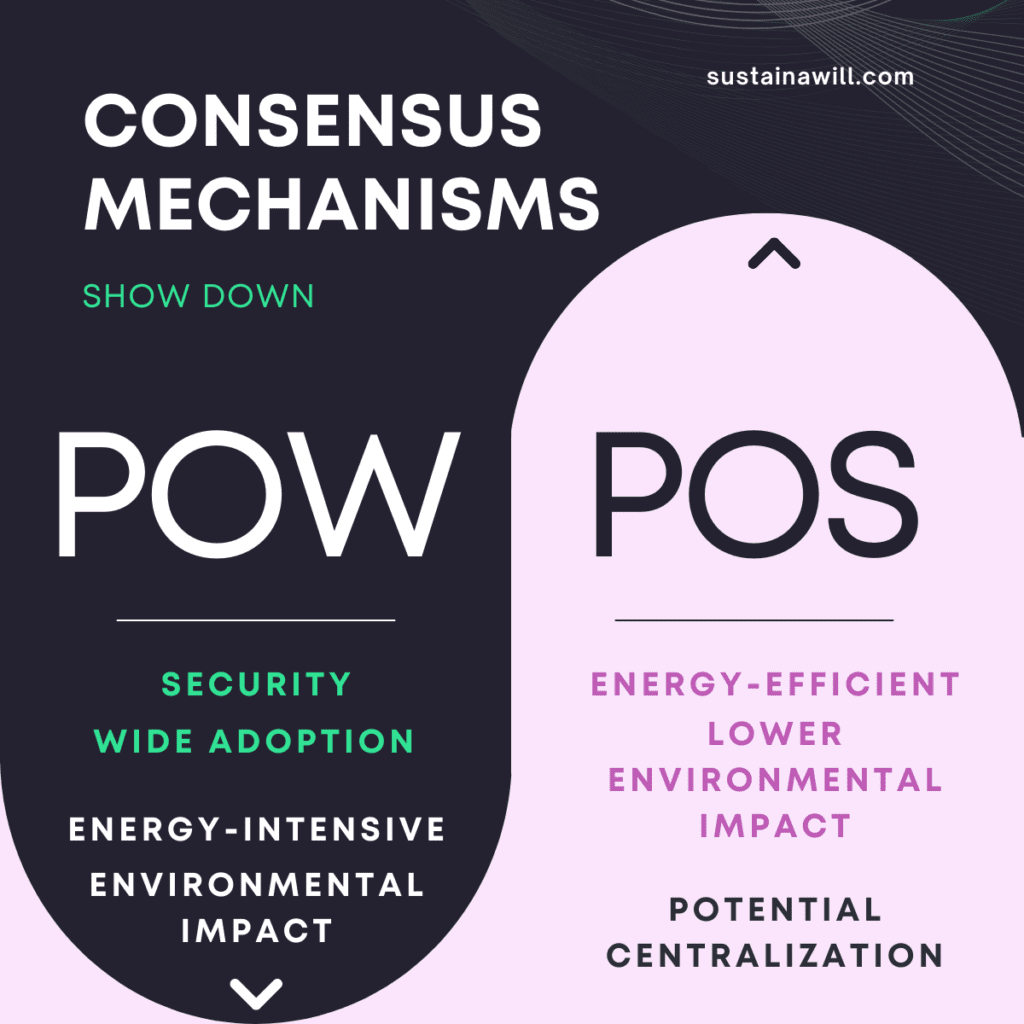Whether you’re an investor, a miner, or simply a concerned citizen: If you’re reading this, you might be curious, or perhaps even concerned, about the impact of Bitcoin mining on our environment. The question that’s likely been on your mind is: “Can Bitcoin Mining be Environmentally Friendly?”
By the end of this post, you’ll have a clear understanding of the challenges, possibilities, and strides being made toward a greener future for Bitcoin mining.
Understanding Bitcoin Mining 101
By now everyone AND their Mamas have heard about Bitcoin mining and how it’s taking the world by storm.
It’s not just about digital coins but also energy and the environment. Let’s dive in, and we’ll explain the whole picture to you!
What is Bitcoin mining?
- Well, it’s the process of releasing new Bitcoins into the market circulation, and it involves solving complex mathematical puzzles using powerful computers. Miners get rewarded with fresh Bitcoins for their hard work.
- Miners secure the network and ensure all transactions are legitimate and transparent. They’re like the guardians of the Bitcoin realm, making it trustworthy.
The Environmental Challenge
Now, here’s the thing: Bitcoin mining demands massive computing power. That’s great for security but not so much for the environment. Here are the key challenges:
- Energy Hunger: Mining operations gobble up lots of electricity, often from non-renewable sources. Think of huge power bills and carbon footprints.
- E-waste: Old mining equipment becomes obsolete quickly, leading to electronic waste. That’s not eco-friendly.
- Global Footprint: Mining is widespread, and not every place has clean energy sources. This can be a problem for the environment.
Now that the basics are clear let’s dive way deeper into the world of bitcoin mining and what it means for our planet!
So let’s ask one more time:
Is Bitcoin Mining Environmentally Friendly?
To put it bluntly, if Bitcoin were treated as a nation, it would fall in the 32nd position for electricity consumption worldwide surpassing The Netherlands with its 17.53 million inhabitants.
Indeed, there is a counter-argument to consider. A recent survey conducted by the mining council has indicated that Bitcoin mining employs 56% of green energy sources. This percentage surpasses the usage of sustainable energy in several countries, including prominent nations like the United States, Germany, China, and India.
Verdict
Bitcoin mining involves solving complex mathematical problems using high-powered computers, and this process consumes a lot of energy.
However, the fact that over half of it now comes from eco-friendly sources demonstrates serious efforts toward sustainability.
Things That Have to Change
- Miners must transition from power-hungry ASIC machines to more energy-efficient alternatives.
- Bitcoin’s consensus mechanism should shift away from PoW to reduce its energy consumption and environmental impact.
- Miners ought to adopt cleaner, renewable energy sources, eliminating reliance on harmful fuels.
- Cryptocurrencies, including altcoins, must reevaluate their consensus mechanisms to lower their collective carbon footprint and strive for sustainability.

Can Crypto Mining Ever Be Environmentally Friendly?
YES, while the current state of Bitcoin mining isn’t exactly environmentally friendly, there’s a big potential for change within the cryptocurrency space.
Steps The Crypto Industry Has to Take
- Using Renewable Energy Sources: Miners must transition from power-hungry ASIC machines to more energy-efficient alternatives. Renewable energy sources like sun, wind, and water should be used instead.
- Developing Energy-Efficient Hardware: Bitmain, a leading hardware manufacturer, has introduced energy-efficient mining equipment in its Antminer series.
- Transitioning to Environmentally Friendly Consensus Mechanisms: Bitcoin’s consensus mechanism should shift away from PoW to reduce its energy consumption and environmental impact. For example, Ethereum’s ongoing transition to Ethereum 2.0 involves moving from energy-intensive Proof of Work (PoW) to Proof of Stake PoS.
- Using Renewable Energy Sources: Miners ought to adopt cleaner, renewable energy sources, eliminating reliance on harmful fuels.
Proof of Stake (PoS) vs. Proof of Work (PoW) in Blockchain
Proof of Stake (PoS) is a blockchain consensus mechanism where validators (participants who propose and verify transactions) are chosen to create new blocks and confirm transactions based on the amount of cryptocurrency they hold and are willing to “stake” as collateral.
It’s a more energy-efficient alternative to Proof of Work (PoW), where miners solve complex mathematical puzzles to create new blocks, a process that consumes substantial energy and computational resources.
Now that all the basics are understood,
Let us dive deeper into the steps that need to be taken in order to align crypto with sustainability and environmental friendliness:
How Can We Make Mining Better for the Environment?
To pave the way for environmentally friendly mining practices, the path forward is clear. Two primary objectives stand out:
- 1. Reduce Used Energy: Mining operations must strive to reduce energy consumption significantly, making the most of every unit of power used.
- 2. Ensure Use of Green Energy: It’s imperative to ensure that the energy consumed during mining processes is derived from sustainable and eco-friendly sources.

1. Choose Renewable Energy in Bitcoin Mining
Utilizing renewable energy sources for Bitcoin mining can significantly reduce its environmental impact. Several strategies and examples include:
- Hydropower: Mining operations in areas with abundant hydropower, like the Pacific Northwest in the United States and certain regions in China, are using this renewable energy source.
- Solar Energy: Solar-powered mining farms, like those found in Australia and various other locations, harness energy from the sun to sustain mining operations.
- Wind Energy: Wind turbines can generate electricity for mining operations in places with strong and consistent winds, such as Texas and some European countries. However, this way of powering Bitcoin mining is sadly not as widespread as solar.
- Geothermal Power: Some mining facilities tap into geothermal energy sources to power their operations, such as RenewaBit’s GreenFlash service, which retrofits oil and gas wells to produce sustainable energy for cryptocurrency mining, making it an eco-friendly solution with multiple benefits.
- Biogas and Biomass: In the serene Welsh countryside, Philip Hughes combines traditional farming with a unique twist – cryptocurrency mining. Using renewable energy derived from methane generated by cow manure through anaerobic digestion, he powers mining rigs for cryptocurrencies like Ethereum, making the most of sustainable practices in a picturesque setting.
- Community Initiatives: Projects such as SolarCoin and Solar-Powered Bitcoin Mining Pools are actively promoting the use of renewable energy in the Bitcoin mining sector.
- Environmental Offsets: Initiatives like “Plant a Tree with Bitcoin” encourage miners to offset their carbon footprint by supporting reforestation and conservation efforts.
By implementing these renewable energy solutions, the mining industry can become more environmentally responsible and sustainable.
2. Embrace Innovations in Eco-Friendly Mining
- Proof of Stake (PoS): PoS-based cryptocurrencies like Ethereum are transitioning from energy-intensive Proof of Work (PoW) systems. PoS requires less power and has a lower carbon footprint.
- Sustainable Hardware Solutions: Companies are developing eco-friendly mining hardware that consumes less electricity while maintaining high processing power. Examples include Bitmain’s Antminer S21 models and MicroBT’s Whatsminer M60 series.
- Liquid Cooling Systems for Efficiency: Liquid immersion cooling technology submerges mining rigs in dielectric fluid, reducing energy consumption by maintaining optimal operating temperatures.
- Embracing Waste Heat Recovery: Some mining facilities are leveraging waste heat generated by mining rigs to provide heating for nearby homes, swimming pools, or greenhouses. This minimizes energy waste and benefits local communities.
These innovations aim to make mining more eco-friendly, lower its energy consumption, and reduce its environmental impact.
3. Opt for Proof of Stake (PoS)
In PoW:
- Mining involves solving complex mathematical puzzles to validate and add new transactions to the blockchain.
- Miners compete to find the correct solution, which requires substantial computational power.
- The first miner to solve the puzzle gets the right to add the next block and is rewarded with cryptocurrency.
In PoS:
- There are no mining activities in the traditional sense, as there are no puzzles to solve.
- Instead of miners, validators are responsible for creating new blocks and validating transactions.
- Validators are chosen based on the amount of cryptocurrency they “stake” as collateral, as well as other factors, and they are rewarded for their validation activities.
A Showdown: PoS VS Pow
While both PoW and PoS require computing power, PoW relies on solving computational puzzles, which consumes substantially more energy.
In contrast, PoS uses a more energy-efficient method to secure the network, and validators are chosen differently, primarily based on their holdings and participation in the network.
This means, if you transition to PoS, you would still need computing power, but it would be for different purposes (e.g., running a validating node) and would be significantly more energy-efficient compared to traditional PoW mining.

So, Why Are We Not Transitioning the Whole Industry to PoS?
Cons of Transitioning to PoS:
- Security Concerns: Critics argue that PoS may be less secure than PoW, as validators don’t have the same level of “skin in the game.” There’s a risk of malicious actors compromising the network.
- Initial Distribution: Transitioning to PoS may require a fair distribution of coins, which can be challenging to achieve. It might favor early adopters and developers.
- Hard Forks and Network Upgrades: Implementing PoS often involves significant changes to the blockchain’s protocol, which can lead to contentious hard forks and community disagreements.
- Network Participation: PoS networks require participants to lock up a certain amount of cryptocurrency as collateral. This can deter smaller players from joining.
Verdict:
Transitioning the entire crypto industry to PoS could address the energy consumption and environmental concerns associated with PoW.
However, it’s not without challenges. PoS networks must carefully balance security, decentralization, and network participation.
While some cryptocurrencies are making the switch to PoS, it may not be feasible or desirable for every project.
The industry’s future may involve a mix of consensus algorithms.
The ultimate goal of this mix of consensus algorithms is to strike a balance between energy efficiency, security, scalability, and decentralization.
4. Opt For Sustainable Mining Pools
What are Mining Pools?
Mining pools are collaborative networks of miners who combine their computational power to increase their chances of successfully mining cryptocurrency. Instead of mining individually, miners work together and share the rewards proportionally to their contributions.
- The Role of Mining Pools: Mining pools are essential because they enhance the consistency of earnings and reduce the time it takes to receive rewards. However, not all mining pools are equally eco-friendly.
- Choosing Environmentally Conscious Mining Pools: When selecting a mining pool, it’s crucial to consider its environmental practices. Some mining pools are dedicated to sustainability and focus on minimizing their carbon footprint.
- These environmentally conscious mining pools often use renewable energy sources like hydroelectric or solar power and employ eco-friendly strategies to mitigate the impact of cryptocurrency mining on the environment.
- Examples of such pools include Slush Pool, F2Pool, and Northern Bitcoin. By choosing these pools, miners can support sustainable and eco-friendly mining practices while participating in cryptocurrency mining.
- These environmentally conscious mining pools often use renewable energy sources like hydroelectric or solar power and employ eco-friendly strategies to mitigate the impact of cryptocurrency mining on the environment.
The Top 10 Most Sustainable Cryptocurrencies

👑 SolarCoin (SLR)
SolarCoin (SLR) is a cryptocurrency that was created to incentivize solar electricity generation. It’s a unique cryptocurrency in the sense that it’s not mined through traditional Proof of Work (PoW) or Proof of Stake (PoS) methods.
Instead, SolarCoin is earned by solar electricity producers as a reward for generating solar energy.
The following 9 sustainable cryptocurrencies primarily use the Proof of Stake (PoS) consensus mechanism, which is generally considered more environmentally friendly compared to Proof of Work (PoW):
Ethereum 2.0 (ETH)
Ethereum, the second-largest cryptocurrency by market capitalization, is in the process of transitioning to Ethereum 2.0, which will operate on a PoS system.
Cardano (ADA)
Cardano is a PoS blockchain platform known for its focus on sustainability, scalability, and interoperability.
Polkadot (DOT)
Polkadot is a PoS blockchain that aims to enable different blockchains to interoperate, enhancing scalability and sustainability.
Tezos (XTZ)
Tezos is a self-amending blockchain platform that relies on PoS and on-chain governance for sustainability.
Algorand (ALGO)
Algorand uses a PoS protocol to provide a scalable, efficient, and environmentally friendly blockchain platform.
Avalanche (AVAX)
Avalanche employs a PoS consensus mechanism to offer a highly scalable, secure, and sustainable blockchain network.
Cosmos (ATOM)
Cosmos is a PoS blockchain platform designed for interoperability and sustainability in a multi-chain ecosystem.
Stellar (XLM)
Stellar operates on a PoS system and focuses on facilitating cross-border payments and sustainable financial services.
Terra (LUNA)
Terra utilizes PoS and offers a stablecoin ecosystem to promote sustainable digital currencies.
Remember that while PoS cryptocurrencies are generally considered more environmentally friendly, their sustainability also depends on various factors, including their underlying technology, energy efficiency, and the commitment to environmentally conscious practices.
Always conduct thorough research before investing in any cryptocurrency.
Challenges and Criticisms in Achieving Crypto Eco-Friendliness
As the crypto industry strives to become more environmentally friendly, it faces a set of challenges and criticisms that require attention and resolution:
1. Regulatory Frameworks: A Necessity
Challenge:
The crypto industry operates in a regulatory gray area in many regions. This can hinder the implementation of eco-friendly practices, as companies may prioritize compliance with existing regulations over environmental considerations.
Solution:
The development of clear and supportive regulatory frameworks for cryptocurrencies is essential. Governments and authorities need to guide eco-friendly practices while addressing concerns related to taxation, fraud, and security.
2. Balancing Profitability and Sustainability
Challenge:
Miners and blockchain projects often face a trade-off between profitability and sustainability. Energy-efficient practices, while environmentally friendly, may impact profit margins. The prioritization of eco-friendliness should not lead to financial instability.
Solution:
It’s crucial to find a balance between profitability and sustainability. This can involve incentivizing green practices, encouraging renewable energy adoption, and implementing cost-efficient technology solutions.
3. Scalability Challenges
Challenge:
As blockchain networks grow, maintaining their eco-friendliness becomes increasingly complex. Scalability challenges may lead to more energy-intensive operations, especially for PoW-based networks.
Solution:
Exploring scalability solutions such as Layer-2 networks, sidechains, and advanced consensus algorithms will be crucial to managing the energy consumption of larger blockchain ecosystems.
4. Lack of Standardization
Challenge:
There’s currently no standardized method for measuring the environmental impact of crypto activities. This makes it difficult for the industry to demonstrate its progress in achieving eco-friendliness.
Solution:
Developing consistent environmental metrics, possibly through industry collaboration or the establishment of independent organizations, can help create a standardized approach to measuring and reporting the environmental impact.
5. Public Awareness and Education
Challenge:
Many cryptocurrency users and investors are unaware of the environmental impact of their activities. Educating the public about the importance of eco-friendliness in crypto and how they can contribute is an ongoing challenge.
Solution:
Building awareness through education campaigns, eco-friendly crypto products, and transparent reporting can help users make more informed choices that support sustainability.
6. Adoption of Environmentally Friendly Practices
Challenge:
Despite the potential for eco-friendly mining technologies and renewable energy adoption, these practices have not been universally adopted across the industry.
Solution:
Encouraging and incentivizing the adoption of environmentally friendly practices through positive examples, rewards, and industry standards can drive change within the crypto ecosystem.
Addressing these challenges is essential to ensure the crypto industry makes significant progress in its journey toward eco-friendliness. By overcoming these hurdles, the industry can build a more sustainable and responsible future.
FAQs: Everything You Wondered About Bitcoin Mining
Still curious about Bitcoin mining and its environmental impact? Want a little recap? Here are short and to-the-point answers to some common questions about environmentally friendly crypto:
Is Bitcoin Mining Environmentally Friendly?
Answer:
Bitcoin mining, particularly through the Proof of Work (PoW) method, has been criticized for its energy consumption and environmental impact. However, the industry is actively working on eco-friendly alternatives, such as transitioning to Proof of Stake (PoS) and using renewable energy sources.
How Can I Make Bitcoin Mining Environmentally Friendly?
Answer:
If you’re involved in Bitcoin mining, you can choose eco-friendly practices, like using renewable energy sources, investing in efficient mining hardware, or supporting cryptocurrencies with greener consensus algorithms.
How Can We Make Mining Better for the Environment?
Answer:
To enhance mining’s environmental impact, the industry is adopting technologies like PoS, sustainable hardware, and waste heat recovery systems. Supporting eco-friendly mining initiatives and choosing mining pools committed to sustainability also contribute.
Is There an Environmentally Friendly Way to Mine?
Answer:
Yes, there are eco-friendly mining practices, such as PoS, liquid cooling systems, and renewable energy use. These approaches reduce energy consumption and carbon emissions associated with mining.
How Can We Make Blockchain More Environmentally Friendly?
Answer:
Shifting to more energy-efficient consensus algorithms, like PoS, and encouraging the use of renewable energy sources in blockchain networks can significantly improve the industry’s environmental footprint.
What Is the Best Renewable Energy for Bitcoin Mining?
Answer:
Solar, wind, and hydropower are common renewable energy sources used in Bitcoin mining. The best choice depends on geographic location and the availability of these resources.
Can Crypto Be Environmentally Friendly?
Answer:
Yes, the crypto industry is actively working on becoming more environmentally friendly. This includes transitioning to eco-friendly consensus algorithms and promoting the use of renewable energy in mining.
Why Isn’t Bitcoin Environmentally Friendly?
Answer:
Bitcoin’s energy-intensive PoW mining has raised environmental concerns. The network’s security relies on solving complex mathematical puzzles, consuming significant electricity.
Which Crypto Mining Is Environment-Friendly?
Answer:
Cryptocurrencies using PoS, like Ethereum 2.0, Cardano, and Algorand, are considered more environmentally friendly. These systems don’t require energy-intensive mining but validate transactions through a different mechanism.
As the crypto industry evolves, it aims to address environmental concerns through innovative solutions, making eco-friendly practices more accessible and achievable.
Conclusion: Charting the Path to a Sustainable Future
While there is no single, straightforward answer to the question of whether Bitcoin mining will become truly environmentally friendly in the future, the industry is making significant strides towards sustainability.
The adoption of eco-friendly technologies and practices, such as Proof of Stake (PoS), renewable energy use, and waste heat recovery, represents a promising shift. Moreover, a growing awareness of environmental, social, and governance (ESG) principles is driving responsible and sustainable crypto initiatives.
In conclusion, Bitcoin mining is on a path toward greater environmental sustainability. The crypto community, innovators, and industry leaders are working together to reduce its carbon footprint and support a greener, more eco-friendly future. As technology continues to evolve, so too will the quest for a sustainable and environmentally friendly blockchain ecosystem.







